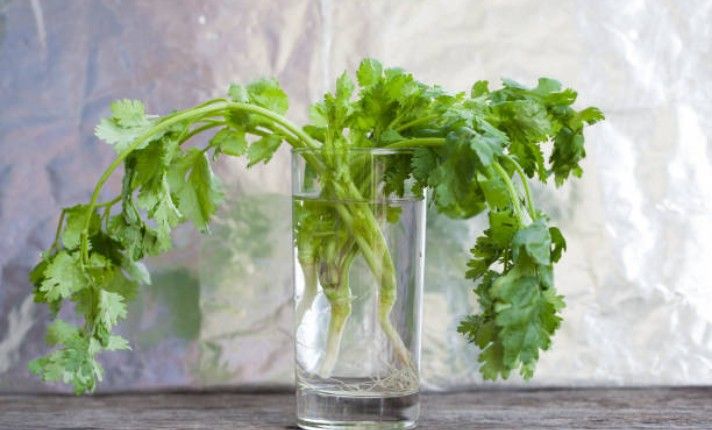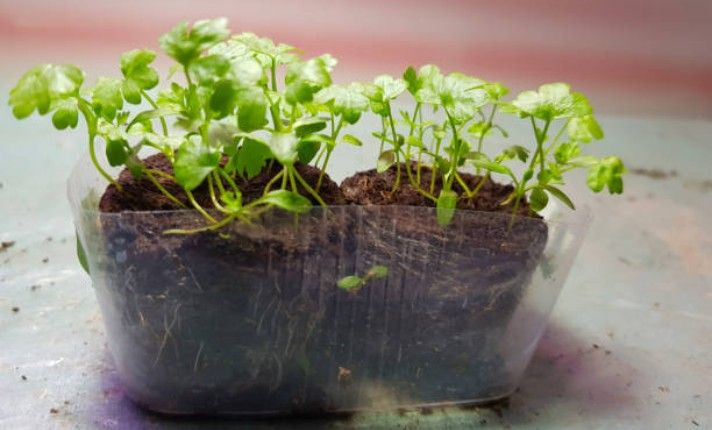Last Updated on April 7, 2025 by Jocelyn
Ever run out of cilantro when you’re craving some fresh salsa or a tasty dish? Good news – you can easily propagate cilantro right at home! Whether you’re growing it for the flavorful leaves or for seed production, learning how to keep your cilantro plants going is simple.
In this guide, we’ll share how to grow cilantro from seeds and how to keep it fresh even in hot weather. You’ll never be without your must-have herb for cooking again!
Table of Contents
ToggleUnderstanding Cilantro and Its Growth Process
Cilantro grows best in cooler weather, and it prefers well-draining soil. The seeds, also called coriander, need cool soil to germinate, marking the beginning of cilantro growth stages.
Cilantro’s taproot grows deep into the soil, so be sure to give it enough space to spread out. It likes full sun, but can handle a bit of shade when the temperature gets too high. can you adjust the keyword cilantro growth stages
In the spring, cilantro starts growing quickly and can be ready to harvest in just 60 days. However, in warmer weather, cilantro can start bolting, meaning it produces flowers and stops growing the leaves we use in cooking.
If you’re planting cilantro seeds, it’s best to plant them after the last frost date for the cooler months. You’ll get the best growth before the weather gets too hot. The approach is similar to pickle plant propagation, where careful attention leads to robust development.
I’ve found that cilantro can also grow well in a pot or container garden if you don’t have a lot of space. Just keep it near a window with plenty of sun and water it regularly.
How to grow cilantro from cuttings in water
You can propagate cilantro in water. To start, cut a healthy stem just below a node. Place the cutting in a jar of water, making sure the node is submerged. Put it in a spot with indirect sunlight.
Within a few days, you’ll begin to see roots grow. Once the roots reach about 8-13 cm (3 to 5 inches), you can transplant it into rich soil.
It’s important to remove the lower leaves to help the plant focus on growing strong roots. This method is easy and reliable.
I’ve tried propagating cilantro from cuttings, and while it was tricky, water rooting worked best indoors in my setup. Using water helps you see root growth clearly, and it’s ideal if you’re growing cilantro in a container or kitchen window.

How to Propagate Cilantro from Seed
Here’s how to successfully propagate it from seed:
· Sow seeds about 1/4 in. deep into well-draining potting mix.
· Plant them in a sunny area or place your container near a window to ensure plenty of light.
· Keep the soil moist but not waterlogged; make sure there’s good drainage in your container.
· Seeds should germinate in about 7-10 days. During this time, keep the surface layer moist.
· Once the seedlings start to grow, thin them out so they’re about 1-2 in. apart to allow enough space to grow.
· Water thoroughly to keep the plants healthy, but don’t overdo it.
· If growing indoors, make sure your container has proper drainage to prevent excess water.
· When they’re ready, you can transplant the seedlings outside after the spring frost is gone.

How to Regrow Cilantro from Roots
Regrowing cilantro from the roots is a neat trick! Just grab a bunch of cilantro stems with roots still attached. Place them in a small jar with water, and keep it in a sunny spot. Change the water every few days.
After a week or two, you’ll start to see new leaves popping up. It’s like magic, but it’s really just good plant care! It’s a simple way to enjoy fresh cilantro again without replanting from seeds.
This technique aligns with how to propagate a croton plant, emphasizing steady care and regular water changes for success.
Propagating Cilantro Indoors
When propagating cilantro indoors, you’ll need to consider a few things for better growth.
First, use a self-watering planter or a regular pot with drainage holes to prevent wet soil that could lead to root rot. A free-draining potting mix is best to keep moisture balanced.
When it comes to light, cilantro needs at least 6 hours of sunshine or artificial grow light. If you’re using a grow light, a 24W screw-in bulb should do the trick.
Start by taking a cutting or planting seeds in a mixing bowl with water. After a couple of weeks, the roots will start to form. Once the roots grow strong enough, transfer the cilantro to a pot (about 4 inches in size).
You can feed the plant with a balanced blend of plant food every few weeks to keep it growing. Keep the temperature between 55-70°F for best germination.
Be mindful of pests, and always ensure your plants aren’t exposed to extreme heat, which can cause them to bolt or die.

How to Care for Your Cilantro Plants
Cilantro is a easy herb to grow, but it does need some care to keep it healthy. If you’re wondering how to give your cilantro the best care, check out this helpful guide.
| Topic | Details |
| Watering | Water regularly with about 1 inch of water per week. Avoid excess moisture. |
| Air Flow | Keep plants in an area with good air flow to prevent disease. |
| Flowering and Pinching | Pinch off flower buds to encourage more leaf production. Avoid hot weather to prevent bolting. |
| Pruning | Prune damaged leaves or discolored leaves to keep the plant healthy. |
| Fertilizer | Use organic fertilizer like compost or earthworm castings for extra nutrients. |
| Pests | Watch out for aphids and leaf hoppers. Use insecticidal soap to get rid of pests. |
| Diseases | Prevent leaf spot and powdery mildew by avoiding overhead watering and keeping good air circulation. |
| Hot Weather | Avoid hot weather as it can make cilantro bolt (stop producing leaves). |
| Moisture | Avoid excess moisture to prevent mold and mildew. |
How to Harvest and Store Cilantro
When it comes to harvesting cilantro, you can cut the leaves and stems once the plant has grown enough. Use clean scissors or pruners to clip the top leaves, leaving the main part of the plant intact. This helps it keep growing.
If you want to store it, you can freeze it, but make sure the leaves are clean and dry. Ice cube trays work great for this! Just chop it up and fill the tray with water.
You can also store it in the fridge, wrapped in a damp towel to keep it fresh longer. If you prefer drying, lay the leaves out in a cool place and let them air dry. Once done, store the dried cilantro in a glass jar.
As for cilantro’s growing conditions, it loves cool-season temperatures and won’t do well in the hot summer heat. You’ll want to harvest it before it starts bolting and producing seed pods.
If this happens, it’s best to collect the seeds for future planting. Keep in mind, cilantro grows quickly and is usually ready to harvest in about 45 to 60 days after planting.
FAQ’s
Q: Can You Grow Cilantro From Cut?
A: Take fresh cilantro cuttings and cut them into small pieces. Fill a bottle with water and place the cuttings inside.
Add a small sponge or make holes in the cap to hold the stems upright. After a few days, roots will grow, and you can transfer them to soil or a hydroponic system.
Q: Does Cilantro Grow Back Every Year?
A: No, cilantro doesn’t grow back like a perennial, but it can self-seed. In mild climates, seeds can sprout in fall and grow into baby plants that survive cool winter temperatures. By next spring, they mature into new plants.
Q: How Do You Reverse Cilantro Bolting?
A: To stop cilantro from bolting, cut the stalk as soon as you notice flowers. Keep the plant cool by providing shade and regular watering. If it still bolts, let it flower to attract pollinators, then collect the seeds for replanting.
Q: What Is the Lifespan of a Cilantro Plant?
Q: The lifespan of cilantro is short, usually a few weeks to months. It depends on growing conditions, like sunlight, water, and care. After flowering, its life cycle ends.
Q: Can You Regrow Store-Bought Cilantro?
A: Yes, you can regrow store-bought cilantro! Just place the stems with roots in a glass of water and keep them in sunlight.
For better results, transfer them to a pot with soil after a few days. Within a few months, you’ll have enough to harvest.
Conclusion
Propagating cilantro is an affordable and practical way to maintain a steady supply in your garden or kitchen. You can grow it from seeds or stems, both of which are effective methods.
With just a little effort, you can enjoy fresh cilantro whenever you need it. It’s also a great way to cut down on waste by reusing parts of your existing plants.
Why not give it a try and see your cilantro collection grow? Start propagating today and enjoy the benefits!

